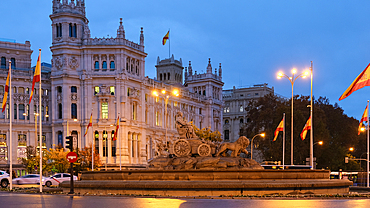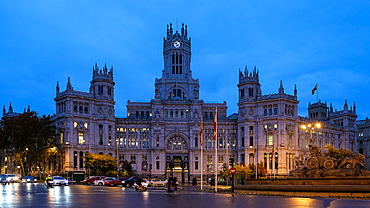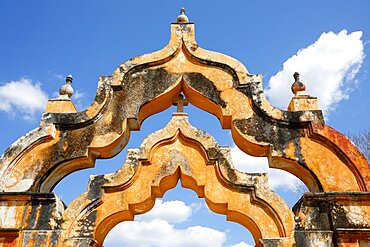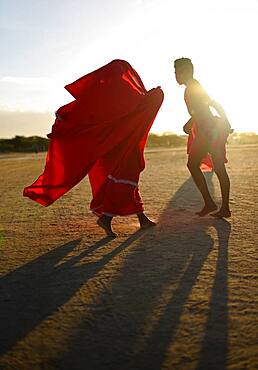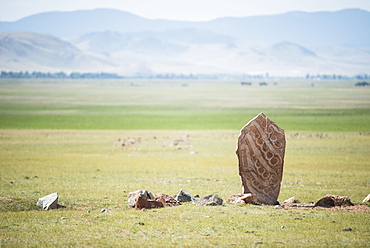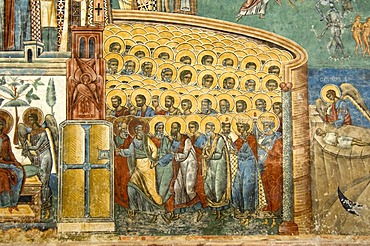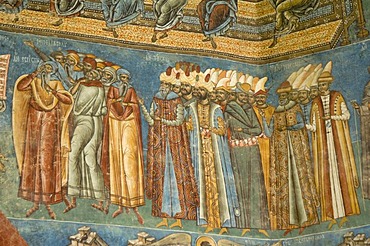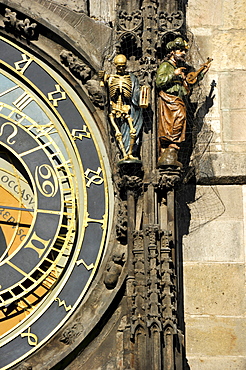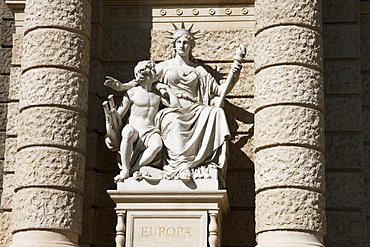Recent searches
Loading...
1373-302 - Scenic view of Plaza de Cibeles, an iconic square representing Madrid, Spain. Featuring the majestic Cibeles Palace in the backdrop and the famous Cibeles Fountain in the foreground.
1373-301 - Scenic view of Plaza de Cibeles, an iconic square representing Madrid, Spain. Featuring the majestic Cibeles Palace in the backdrop and the famous Cibeles Fountain in the foreground.
1373-300 - Scenic view of Plaza de Cibeles, an iconic square representing Madrid, Spain. Featuring the majestic Cibeles Palace in the backdrop and the famous Cibeles Fountain in the foreground.
809-8637 - Tara, female Bodhisattva in Mahayana Buddhism, known as the mother of liberation, representing the virtues of success in work and achievements, Vietnam, Indochina, Southeast Asia, Asia
1178-43929 - Mexico, Yucatan, Architectural detail of old arch representing 1000 head of cattle
1178-43915 - Portugal, Evora, Building exterior representing architecture with Moorish influence
1179-6006 - Beds in capsules in an ice hotel room representing a space ship, Lainio Snow Village, Kittila, Lapland, Finland
801-3101 - Stucco Mask, Sun God Representing the Sunset, Edzna Archaeological Zone, Campeche State, Mexico, North America
1350-4175 - Upturned sculptures representing phoenix birds on the roof of a traditional building, Fenghuang, China.
1350-1865 - Yonna dance, also called Chichamaya, carries a considerable symbolic charge for the Wayuu indigenous people of Colombia, representing three basic principles for this tribal group: Social equality, collective solidarity and the improvement of relations between the human being and the Cosmos.
1350-1859 - Yonna dance, also called Chichamaya, carries a considerable symbolic charge for the Wayuu indigenous people of Colombia, representing three basic principles for this tribal group: Social equality, collective solidarity and the improvement of relations between the human being and the Cosmos.
1350-1871 - Yonna dance, also called Chichamaya, carries a considerable symbolic charge for the Wayuu indigenous people of Colombia, representing three basic principles for this tribal group: Social equality, collective solidarity and the improvement of relations between the human being and the Cosmos.
1350-1860 - Yonna dance, also called Chichamaya, carries a considerable symbolic charge for the Wayuu indigenous people of Colombia, representing three basic principles for this tribal group: Social equality, collective solidarity and the improvement of relations between the human being and the Cosmos.
1350-1861 - Yonna dance, also called Chichamaya, carries a considerable symbolic charge for the Wayuu indigenous people of Colombia, representing three basic principles for this tribal group: Social equality, collective solidarity and the improvement of relations between the human being and the Cosmos.
1350-1862 - Yonna dance, also called Chichamaya, carries a considerable symbolic charge for the Wayuu indigenous people of Colombia, representing three basic principles for this tribal group: Social equality, collective solidarity and the improvement of relations between the human being and the Cosmos.
1350-1866 - Yonna dance, also called Chichamaya, carries a considerable symbolic charge for the Wayuu indigenous people of Colombia, representing three basic principles for this tribal group: Social equality, collective solidarity and the improvement of relations between the human being and the Cosmos.
1350-1870 - Yonna dance, also called Chichamaya, carries a considerable symbolic charge for the Wayuu indigenous people of Colombia, representing three basic principles for this tribal group: Social equality, collective solidarity and the improvement of relations between the human being and the Cosmos.
1350-1868 - Yonna dance, also called Chichamaya, carries a considerable symbolic charge for the Wayuu indigenous people of Colombia, representing three basic principles for this tribal group: Social equality, collective solidarity and the improvement of relations between the human being and the Cosmos.
1350-1858 - Yonna dance, also called Chichamaya, carries a considerable symbolic charge for the Wayuu indigenous people of Colombia, representing three basic principles for this tribal group: Social equality, collective solidarity and the improvement of relations between the human being and the Cosmos.
1350-1869 - Yonna dance, also called Chichamaya, carries a considerable symbolic charge for the Wayuu indigenous people of Colombia, representing three basic principles for this tribal group: Social equality, collective solidarity and the improvement of relations between the human being and the Cosmos.
1350-1863 - Yonna dance, also called Chichamaya, carries a considerable symbolic charge for the Wayuu indigenous people of Colombia, representing three basic principles for this tribal group: Social equality, collective solidarity and the improvement of relations between the human being and the Cosmos.
1350-1864 - Yonna dance, also called Chichamaya, carries a considerable symbolic charge for the Wayuu indigenous people of Colombia, representing three basic principles for this tribal group: Social equality, collective solidarity and the improvement of relations between the human being and the Cosmos.
1350-1867 - Yonna dance, also called Chichamaya, carries a considerable symbolic charge for the Wayuu indigenous people of Colombia, representing three basic principles for this tribal group: Social equality, collective solidarity and the improvement of relations between the human being and the Cosmos.
1116-47838 - White statues representing Christ's crucifixion, Ballyferriter, County Kerry, Ireland
746-89449 - LGBT street sign with rainbow street representing peace.
1131-1454 - Sao Bento railway station, Azulejos representing Egas Moniz (o Aio) presenting himself to the king of Leon, Porto, Portugal, Europe
450-4427 - Jockeys in colourful outfits representing their respective neighbourhoods (contrade) vying for the lead at the Palio, Siena, Tuscany, Italy, Europe
450-4428 - Jockeys in colourful outfits representing their respective neighbourhoods at full pelt at the Palio, a bareback horserace, Siena, Tuscany, Italy, Europe
1131-1334 - Interior, frescos representing scenes of the Bible, Holy Savior (Vank) Armenian Cathedral, Esfahan, Iran, Middle East
1131-1335 - Interior, frescos representing scenes of the Bible, Holy Savior (Vank) Armenian Cathedral, Esfahan, Iran, Middle East
1131-1263 - Golestan Palace, Shams al-Emareh, Ceramic Tiles representing a music band, Tehran, Islamic Republic of Iran, Middle East
1116-43497 - Decoration For Hanging With Wishes To Bring Good Luck Used In Chinese New Year, The Chinese Character Is Used For Representing Blessing Or Good Fortune, Xiamen, Fujian, China
849-1864 - A collection of 1200 Rakan statues representing the disciples of Buddha, Otagi Nenbutsu-ji temple, on the outskirts of Kyoto, Japan, Asia
849-1863 - A collection of 1200 Rakan statues representing the disciples of Buddha, Otagi Nenbutsu-ji temple, on the outskirts of Kyoto, Japan, Asia
849-1862 - A collection of 1200 Rakan statues representing the disciples of Buddha, Otagi Nenbutsu-ji temple, on the outskirts of Kyoto, Japan, Asia
860-286665 - Deer stones (steles decorated with engravings representing mainly deer, weapons and geometric figures) - Valley High Tamir - Site Tsatsyn Ereg - Mongolia
832-380506 - Door painting representing an old Nepalese Man, Taumadhi Tole square, Bhaktapur, Nepal, Asia
809-7011 - The vault of the choir decorated with mosaics representing the Beatitudes, Crypt, Basilica of Notre-Dame de Fourviere, Lyon, France, Europe
1131-917 - Sioni Cathedral, interior frescoes representing Biblical scenes, Tbilisi, Georgia, Caucasus, Asia
1116-39238 - Twelve slabs positioned in a circle, representing the twelve lost provinces in present-day Turkey at the Armenian Genocide memorial complex on Tsitsernakaberd hill, Yerevan, Armenia
1116-39242 - Young people in front of the twelve slabs positioned in a circle, representing the twelve lost provinces in present-day Turkey at the Armenian Genocide memorial complex on Tsitsernakaberd hill, Yerevan, Armenia
1131-825 - Azulejos representing a Portuguese woman wearing a dark cape, Olhao, Algarve, Portugal, Europe
846-2351 - Figure representing the River Ganges on Bernini's Fountain of the Four Rivers, Piazza Navona, Rome, Lazio, Italy, Europe
857-89377 - Two heads representing Kukulkan, the Feathered Serpent god, decorate a building in the Mayan city of Chichen Itza, Yucatan Peninsula, Mexico
1178-15406 - USA, Georgia, Stone Mountain, Bas-relief representing Confederate leaders
1178-15486 - Mayan carvings representing human skulls
1178-13457 - Mayan carvings representing human skulls
1178-13458 - Mayan carvings representing human skulls
1178-13461 - Mayan carvings representing human skulls
809-6354 - Buddhist sand Mandala, a spiritual and ritual symbol representing the Universe, Paris, France, Europe
809-6355 - Buddhist sand Mandala, a spiritual and ritual symbol representing the Universe, Paris, France, Europe
1167-717 - Maiden statue, Central Fountain representing Rio Turia, and cathedral, Plaza de la Virgen, Valencia, Spain, Europe
797-10856 - England, Berkshire, Windsor, A heraldic plaque representing the kingdom at the time of King Henry IV 1406-1422 located on the bridge that spans the river Thames linking town to Eton
797-12741 - Germany, Berlin, Mitte, The Neptune Fountain or Neptunbrunner by Reinhold Begas dated 1891 with a female statue representing the Elbe one of the four main rivers of Prussia beside Marienkirche St Mary's Church.
1113-96187 - Maori traditional meeting house at Waitangi, carved meeting house representing all tribes, Maori Culture, Te Whare Runanga, North Island, New Zealand
832-250739 - Church of St George of the Voronet Monastry, exterior wall paintings representing the biblical scene The Last Judgment, UNESCO World Heritage Site, South Bucovina, Moldavia, Romania, Europe
832-250740 - Church of St George of the Voronet Monastry, exterior wall paintings representing the biblical scene The Last Judgment, UNESCO World Heritage Site, South Bucovina, Moldavia, Romania, Europe
832-250741 - Church of St George of the Voronet Monastry, exterior wall paintings representing the biblical scene The Last Judgment, Third register, St Paul, the prophets and bishops, UNESCO World Heritage Site, South Bucovina, Moldavia, Romania, Europe
832-250742 - Church of St George of the Voronet Monastry, exterior wall paintings representing the biblical scene The Last Judgment, Third register showing the infidels, Jews, Turkish and Tartars, UNESCO World Heritage Site, South Bucovina, Moldavia, Romania, Europe
832-234873 - Female figure representing River Mur and statue of Archduke Johann, main square, Graz, Styria, Austria, Europe
816-4899 - Carhenge, a replica of England's Stonehenge, made out of cars near Alliance, Nebraska, United States of America, North America
816-4903 - Carhenge, a replica of England's Stonehenge, made out of cars near Alliance, Nebraska, United States of America, North America
816-4897 - Carhenge, a replica of England's Stonehenge, made out of cars near Alliance, Nebraska, United States of America, North America
816-4901 - Carhenge, a replica of England's Stonehenge, made out of cars near Alliance, Nebraska, United States of America, North America
816-4902 - Carhenge, a replica of England's Stonehenge, made out of cars near Alliance, Nebraska, United States of America, North America
816-4900 - Carhenge, a replica of England's Stonehenge, made out of cars near Alliance, Nebraska, United States of America, North America
816-4898 - Carhenge, a replica of England's Stonehenge, made out of cars near Alliance, Nebraska, United States of America, North America
832-220716 - Biblical scenes representing miracles, Wood Church of the Holy Archangels, Unesco World Heritage Site, Rogoz, Maramures, Romania
733-5719 - Iceland, Reykjavik, Solfar (Sun Voyager), iconic stainless-steel modern sculpture representing a Viking longboat by Jon Gunnar Arnason
733-5717 - Iceland, Reykjavik, Solfar (Sun Voyager), iconic stainless-steel modern sculpture representing a Viking longboat by Jon Gunnar Arnason
733-5718 - Iceland, Reykjavik, Solfar (Sun Voyager), iconic stainless-steel modern sculpture representing a Viking longboat by Jon Gunnar Arnason
733-5716 - Solfar (Sun Voyager), iconic stainless-steel modern sculpture representing a Viking longboat by Jon Gunnar Arnason, Reykjavik, Iceland, Polar Regions
832-121535 - One of the statues representing the four seasons, "L'Estate", Summer, by Italian sculptor Francesco Massimiliano Laboureur, 1824, Piazza del Popolo, Rome, Latium, Italy, Europe
832-114604 - Allegorical statues representing death and paganism on the Prague Astronomical Clock on the clock tower of the Old Town City Hall, Old Town Square, historic district, Prague, Bohemia, Czech Republic, Europe
1113-53704 - Young women in traditional dress representing different villages at the Wine Festival in Sitges, Costa de Garraf, Spain
797-10532 - Mexico, Anahuac, Teotihuacan, Detail of architectural crenellation representing a bird on display in the site Museum.
809-5226 - Bronze figures representing the soldiers who defended Leningrad from the Germans during World War II, Victory Square War Memorial, St. Petersburg, Russia, Europe
1116-11822 - Statue representing Europe in front of the Natural History Museum, Vienna (Wien), Austria
857-55813 - Men dressed in elaborate costumes, loosely representing North African tribes, the Moors, smoke cigars while marching in a parade during the Festival of Moors and Christians, (La Fiesta de Moros y Cristianos) in the old town of Alcoy, Alicante Province.
857-55811 - Women dressed in elaborate costumes, loosely representing the North African tribes, the Moors, smoke cigarettes before marching in a parade during the Festival of Moors and Christians, in the old town of Alcoy, Alicante Province, Valencia Autonomous Regio
857-55654 - Pictured is a member of the association: "Geschichte lebendig vermitteln" (bringing history to life) at Checkpoint Charlie (former crossing point of the Allied forces), who is representing an American guard, Berlin, October 01 2009.
857-48870 - A float representing the Italian businessman and politician Silvio Berlusconi during the Carnival of Viareggio.
857-48848 - Mario Draghi is an Italian banker and economist. A float representing the European financial crisis as the Titanic in the streets of the city of Viareggio during the Color parade -- The masks and the floats of the Color Parade during the carnival of Viareggio.
857-48865 - A float representing the Italian businessman and politician Silvio Berlusconi in the Carneval of Viareggio.
857-48869 - A float representing the Italian businessman and politician Silvio Berlusconi surrounded by masks during the Carnival of Viareggio.
1196-227 - Wearing tree bark cloth masks and skirts, dancers representing fish spirits are invited during the season of the peach palm harvest to drink the juice. it is a feast and ritual exchange: the host group offers the spirits large quantities of peach palm juice, smoked meat and fish, and shaman-blessed coca and snuff. the visitors are the costumed dancers impersonating animal spirits. people eat the meat and fish, animal spirits receive the fruits of peach palm, which are cultivated, harvested, and processed by humans. this exchange expresses the idea that people and animals depend on each other for survival and reproduction. vaupes basin, eastern colombia amazon, population: 600
1196-98 - Xavante race. race is really a race at, it’s a ceremony, an aesthetic event. Xavante nonplused by notions of winning losing. logs carried by team, representing oppositions that xavante believe go to make up universe. running of logs expresses dynamic tension between opposing principles. purpose of ceremonies to stress that these antithesis need tear world apart. Opposing be controlled to complement each other create equilibrium harmony. Brazil
841-783 - Man in costume representing a god at the Teyyam ceremony, near Kannur, Kerala, India, Asia
841-782 - Man in costume representing a god at the Teyyam ceremony, near Kannur, Kerala, India, Asia
841-784 - Man in costume representing a god at the Teyyam ceremony, near Kannur, Kerala, India, Asia
665-5102 - Pediment, ancient Grain Market hall, with statues representing Rhone and Durance rivers, and pigeons, Old Aix, Aix en Provence, France, Europe
770-1566 - Solfar (Sun Voyager), iconic stainless-steel modern sculpture representing a Viking longboat by Jon Gunnar Arnason, Saebrot Avenue, Reykjavik, Iceland, Polar Regions
770-1567 - Solfar (Sun Voyager), iconic stainless-steel modern sculpture representing a Viking longboat by Jon Gunnar Arnason, Saebrot Avenue, Reykjavik, Iceland, Polar Regions
809-2222 - Painting of herding the Ox, from the ten Ox Herding Pictures of Zen Buddhism, representing the stages of enlightement, Seoul, South Korea, Asia
809-2223 - Painting of catching the Ox, from the ten Ox Herding Pictures of Zen Buddhism, representing the stages of enlightement, Seoul, South Korea, Asia
809-2221 - Painting of coming home on the Ox's back, from the ten Ox Herding Pictures of Zen Buddhism, representing the stages of enlightement, Seoul, South Korea, Asia
818-109 - Christ Church built in 1837, Upper Canada Village, representing life in Upper Canada in the 1860s, Morrisburg, Ontario, Canada, North America
797-3588 - BELGIUM Brabant Brussels Detail of building facade and Jacquemart clock. Figures representing citizens of Brussels surround the clock face and move to announce the change of hour.
797-3587 - BELGIUM Brabant Brussels Detail of building facade and Jacquemart clock. Figures representing citizens of Brussels surround the clock face and move to announce the change of hour.
641-10361 - a Naga head, representing a snake, Cambodia

